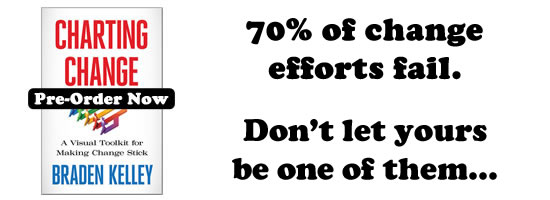The (Fill in the Blank) Way
 Each professional entity has a way of handling business. This way is encoded with spoken and codified rules and unspoken and non-verbal clues on how to perform. What gets done, how decisions are made, and how money is allocated can be defined as “culture.†This way, then, is an explicit and implicit set of rituals that reward or punish based on its own complicated, internal logic.
Each professional entity has a way of handling business. This way is encoded with spoken and codified rules and unspoken and non-verbal clues on how to perform. What gets done, how decisions are made, and how money is allocated can be defined as “culture.†This way, then, is an explicit and implicit set of rituals that reward or punish based on its own complicated, internal logic.
This way, the culture, has adapted over the years. Still, this way is now a well-defined machine of productivity. It weeds out unfitting talent and risks, and it refines work and the flow of work to a crystalline precision. This way creates a shorthand, and saves money, time, and preserves the sense of the place.
Think about it for a minute. What is your organization’s way for handling presentations, new product decisions, new market assessments, service issues, or resolving conflicts? What are the processes, check points, keys to enrollment, and styles of presentation that have become the default way in your organization? How are people rewarded or punished?
Now, do yourself and your organization a valuable favor. Acknowledge that this way is only an agreed upon construction of reality, a mental model and not reality itself.
Here is why: noticing the norms of a model, a way, and then consciously unlearning some of its defaults are key steps in taking breakthrough, disruptive innovations to the market.
You see, every culture has antibodies built into the system. New ideas are typically rejected as vehemently as foreign objects are rejected by the body. The ____________ way may be your biggest obstacle. Therefore, you have to develop the visionary ability to zoom out and get a real sense of the market potential of a new business concept without the blinding shackles of “how we do it today†to limit the thinking.
Sure, there is a time for risk assessment, validation, and a synthesis period of how we, as the ____ way, take this completely new line of business in a channel to market, but if you don’t cultivate this keen zooming out ability, the culture will not allow you to dream valuable dreams.
Remember, those who are called to innovate have to be systems thinkers and visionaries. Luckily, both are learnable skills. The factor that stymies innovation most is the unconscious defaults of a company culture. Those who recognize the system’s operating assumptions and gently inspire others to stretch their thinking on behalf of the organization change the culture in countless positive ways.
Wait! Before you go.
Choose how you want the latest innovation content delivered to you:
- Daily — RSS Feed — Email — Twitter — Facebook — Linkedin Today
- Weekly — Email Newsletter — Free Magazine — Linkedin Group
 Michael Graber is the cofounder and managing partner at Southern Growth Studio, a Memphis, Tennessee-based firm that specializes in growth strategy and innovation. A published poet and musician, Graber is the creative force that complements the analytical side of the house. He speaks and publishes frequently on best practices in design thinking, business strategy, and innovation and earned an MFA from the University of Memphis. Follow Michael @SouthernGrowth
Michael Graber is the cofounder and managing partner at Southern Growth Studio, a Memphis, Tennessee-based firm that specializes in growth strategy and innovation. A published poet and musician, Graber is the creative force that complements the analytical side of the house. He speaks and publishes frequently on best practices in design thinking, business strategy, and innovation and earned an MFA from the University of Memphis. Follow Michael @SouthernGrowth
NEVER MISS ANOTHER NEWSLETTER!
LATEST BLOGS
Three things you didn’t know about credit cards
Photo by Ales Nesetril on Unsplash Many of us use credit cards regularly. From using them for everyday purchases to…
Read MoreFive CV skills of a business-minded individual
Photo by Scott Graham on Unsplash The skills listed on a CV help employers quickly understand your suitability for a…
Read More


